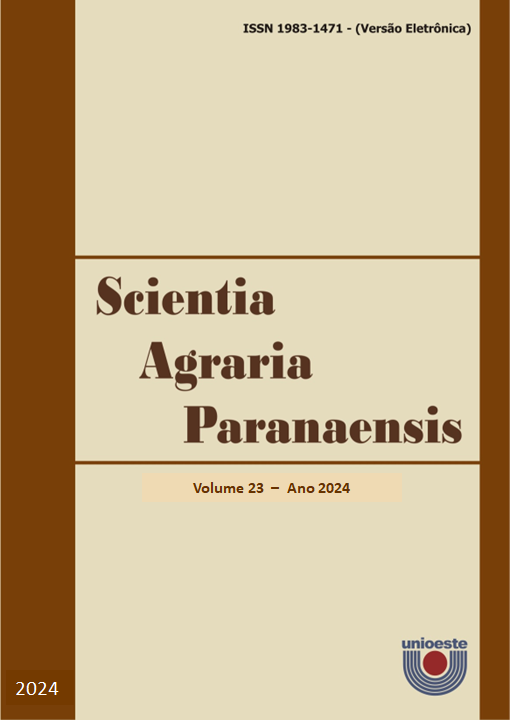Phenological cycle of hops cultivars, in the second production year in Parana State
DOI:
https://doi.org/10.18188/sap.v23.33525Resumo
The hops (Humulus lupulus L.) are a perennial herbaceous plant. Commercially, cultivars are classified as plants of American and European origin. Considering that there is no scientific data on the cultivation and productive capacity of hops in Toledo, the aim of this study was to study the phenological cycle of three cultivars in their second year of production. The research was carried out in the second year of cultivation, 2023/2024, at the Experimental Farm of the Pontifical Catholic University of Paraná, Toledo Campus. Plants of three hop cultivars (Magnum, Hallertauer Mittelfrüeh and Comet) were grown in a V system in a randomized block design, with six plants in each plot. After the stimulus to overcome dormancy in September/October, sprouting began and the phenological stages of the crop were assessed weekly from October/2023 to May/2024. The parameters assessed were: the start of sprouting, the emission of lateral branches, the start of flowering, the formation of cones and the start of the harvest, following a phenological scale. The phenological characterization showed that the Mittelfrüeh cultivar had the longest vegetative period compared to the other cultivars, while the Comet and Magnum cultivars were similar in terms of the total number of days to complete the cycle, with a difference between the number of days for their phenological phases. From the data obtained, it can be concluded that the hop cultivars Comet and Magnum both completed their cycle after 126 days, and H. Mittelfrüeh showed a longer period to complete its cycle, 139 days, under the soil and climate conditions of Toledo-Paraná, Brazil.
Downloads
Publicado
Como Citar
Edição
Seção
Licença
Aviso de Direito Autoral Creative Commons
Política para Periódicos de Acesso Livre
Autores que publicam nesta revista concordam com os seguintes termos:
1. Autores mantém os direitos autorais e concedem à revista o direito de primeira publicação, com o trabalho simultaneamente licenciado sob a Licença Creative Commons Attribution que permite o compartilhamento do trabalho com reconhecimento da autoria e publicação inicial nesta revista.2. Autores têm autorização para assumir contratos adicionais separadamente, para distribuição não-exclusiva da versão do trabalho publicada nesta revista (ex.: publicar em repositório institucional ou como capítulo de livro), com reconhecimento de autoria e publicação inicial nesta revista.
3. Autores têm permissão e são estimulados a publicar e distribuir seu trabalho online (ex.: em repositórios institucionais ou na sua página pessoal) a qualquer ponto antes ou durante o processo editorial, já que isso pode gerar alterações produtivas, bem como aumentar o impacto e a citação do trabalho publicado (Veja O Efeito do Acesso Livre).
Licença Creative Commons
Esta obra está licenciada com uma Licença Creative Commons Atribuição-NãoComercial-CompartilhaIgual 4.0 Internacional, o que permite compartilhar, copiar, distribuir, exibir, reproduzir, a totalidade ou partes desde que não tenha objetivo comercial e sejam citados os autores e a fonte.


